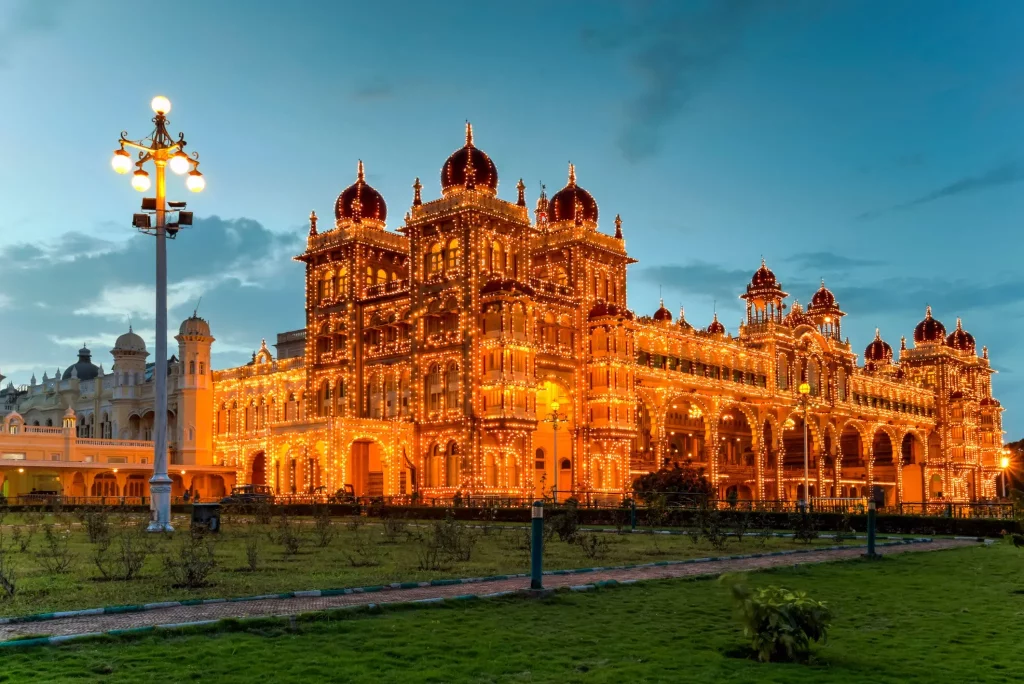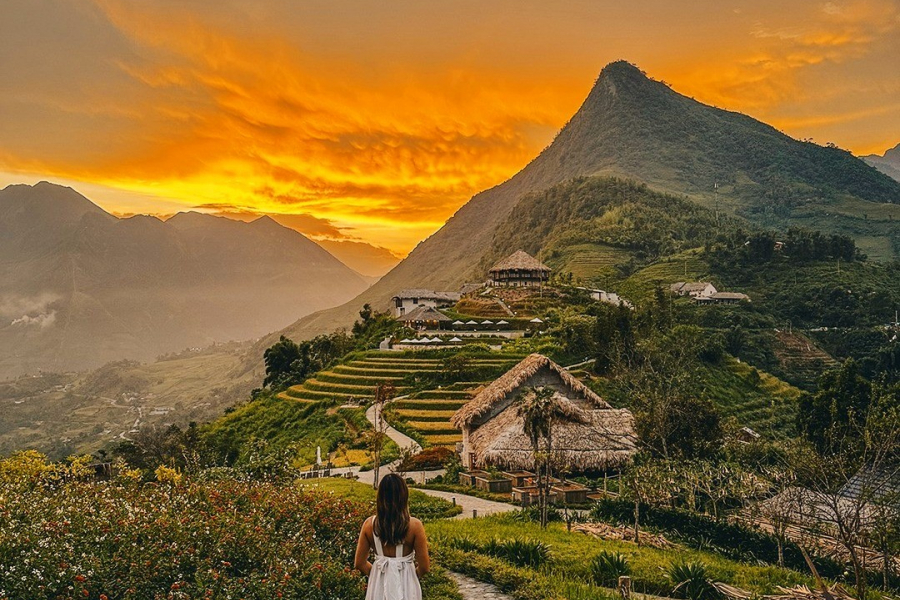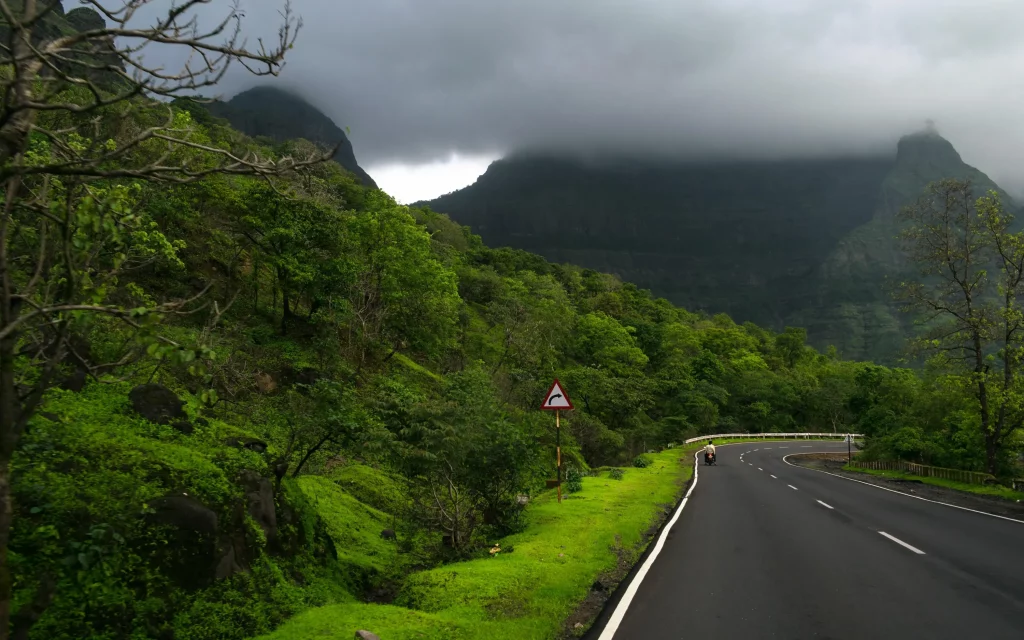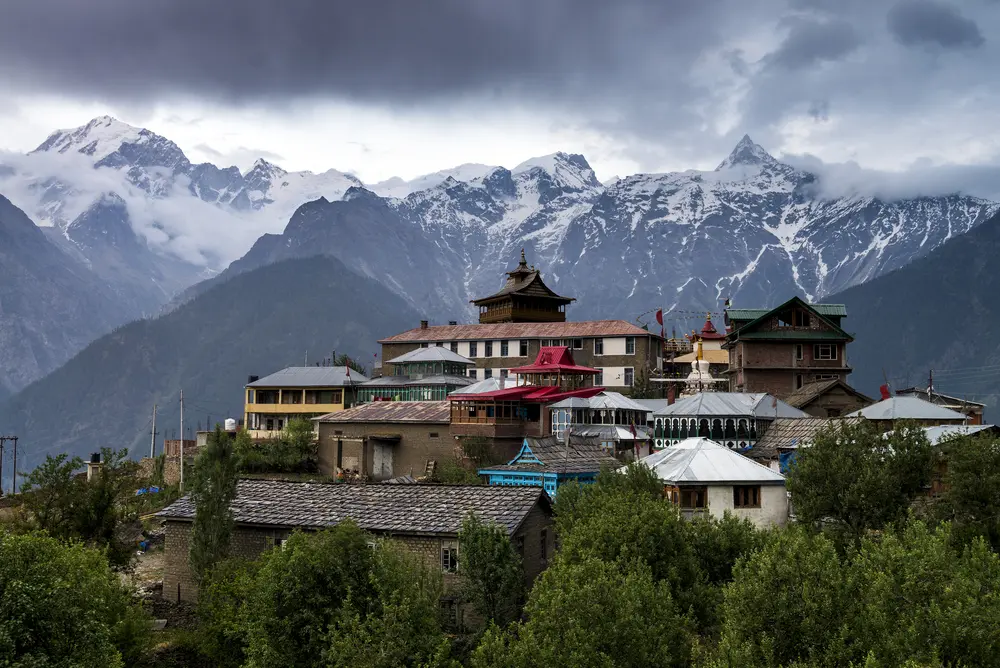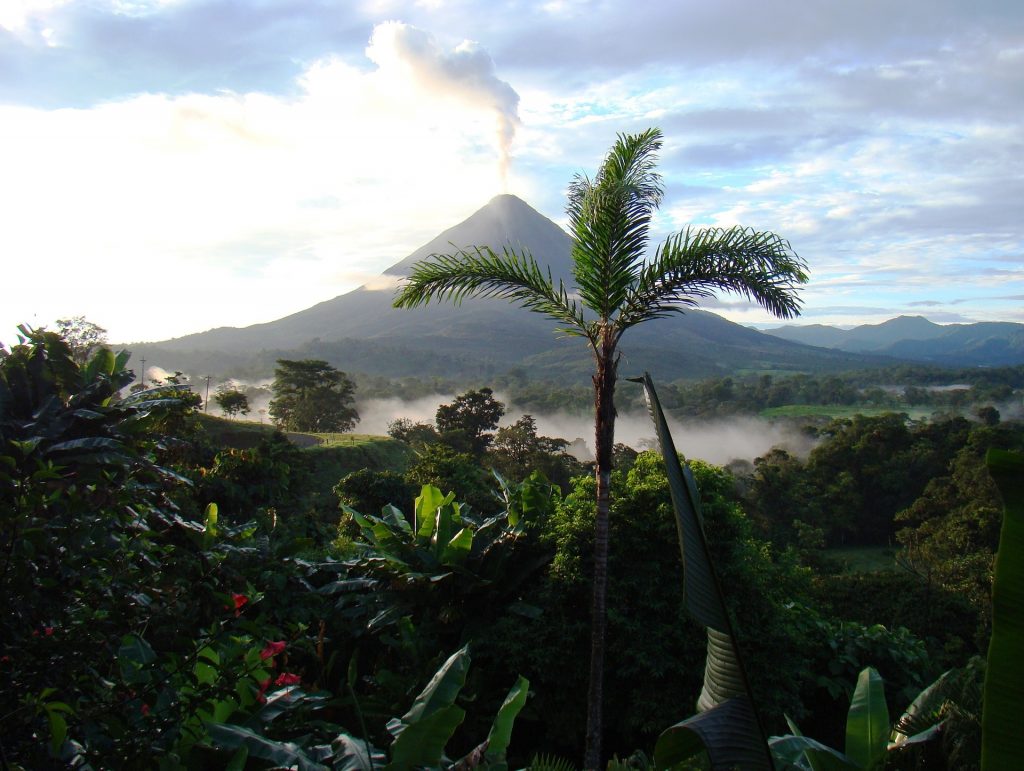Mysuru, formerly known as Mysore located Southwest of Bangalore has always been popular as the Culture Capital of Karnataka. It used to serve as the capital of the erstwhile Kingdom of Mysore for over six hundred years when the Wodeyar dynasty was in rule. It continues to be the home of the descendants of the royal family, who still enjoy a regal treatment from the people of Mysuru. The Wodeyars are known for their love of art and the finer things in life, which is also the reason why Mysore has cultivated the roots of its culture in arts. From the opulent Mysore Palace, the celebrations during the Hindu festival of Dussehra, Mysore’s unique painting style, Mysore Peta which is a noted silk turban, Mysore Pak – a delicious melt-in-your-mouth sweet and the traditional Mysore silk saree that are a symbol of richness – Sightseeing in Mysore is fun as it has a lot to offer for anyone who visits this city.
1. Mysuru Dasara Celebrations
Mysore Dasara celebrates a royal tradition that is over 400 years old. The royal family of Mysore, the Wadiyar family organize this festival every year for locals and tourists.
The festival of Dasara is celebrated at its grandest best in the city of Mysore. The opulent celebrations and fanfare span a period of 10 days. This celebration was first promoted by King Raja Wodeyar I in the 1600s in the month of September or October every year and has been kept alive ever since.
The ninth day of Dasara is known as Mahanavami when the most awaited royal procession takes place. Well-decorated camels, horses, and elephants form an integral part of the procession, with residents lining up along the periphery to catch a glimpse of the opulent splendour it offers.
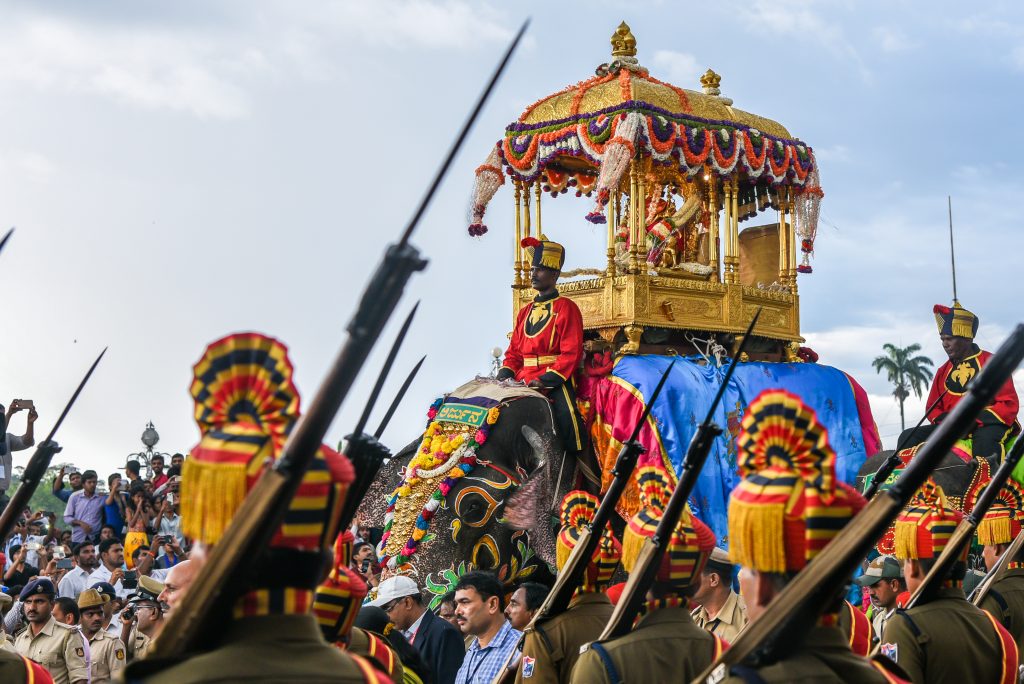
The tenth day of Vijayadashami is reserved for the Jumboo Savari, a crowd pleaser, with elephants that are reared and tended to all year round, especially for the occasion. The traditional procession includes the statue of Goddess Chamundeshwari, enshrined on a mandap that is carried by a decked up elephant, which grabs the spotlight. The elephants too happen to have a dedicated fan following, each being known to the locals by their name, with their mahouts basking the admiration of their gentle beasts.
The procession begins from the Mysore Palace and concludes at Bannimantapa where people worship the banana tree. What makes it all the more exciting are the group dances, live music bands and interesting performances that can be enjoyed all throughout the procession. These festivities conclude on the night of Vijayadashami with a parade of people holding lit torches. This is locally known as Panjina Kavayatthu. The Dussehra celebrations of Mysuru are, without a doubt, the most vibrant and elaborate you’ll find in India.
2. Mysore Palace
The Palace City or Mysore has derived its name from the numerous amount of palace’s found in the city namely – the Mysore Palace, Rajendra Villas, Lalitha Mahal, Jaganmohana Palace amongst others.
The most popular of all the palaces is the Mysore Palace, also known as Amba Vilas. The original prime palace of Mysore was burnt in 1897, and now another structure has been rebuilt on the exact site in 1912 by Henry Irwin, an English architect for a cost of Rs.4.5 million. The palace depicts a unique Indo-Saracenic architectural style on the exterior with a Hoysala style inside. The interiors provide the illusion of a kaleidoscope with mirrors, stained glass and bright colours giving it a royal and posh look.
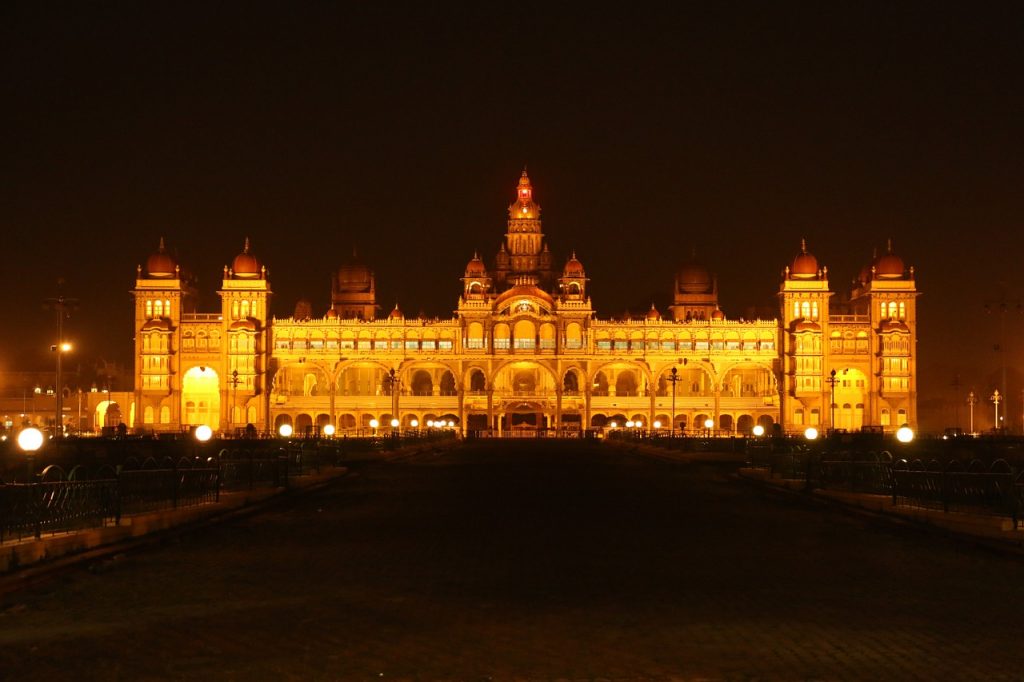
The decor also incorporates the use of mosaic floors, paintings highlighting the Edwardian Raj era and wooden doors with detailed carvings. Other embellishments within the palace include the collection of over 700 weapons. This palace though is maintained by the Karnataka Government, there is still a small portion is allocated to the Royal Family which continues to reside here.
The palace is brightly lit with over 1 lac light bulbs on holidays from 7 pm to 7:45 pm to further accentuate its grand appearance at night. This is one of the most popular tourist destinations in the whole of India.
3. Mysore Painting
Mysore is known for its peculiar style of painting which was originally conceptualized by King Raja Wodeyar during the Vijayanagar reign. Its unique feature is the “gesso work”, on which there is an application of gold foil. It was a mixture of paste made from glue, gambose and lead powder in white colour which provides an embossed texture covered in gold foil.
The typical Mysore paintings have imagery of decked up women highlighted, with a lot of attention to detail that is observed in the poise, elegance, and bright colours. You would often find Hindu Goddesses and Gods as subjects of these paintings. The art is for its intrinsic brush strokes, fine gold work and delicate, fine lines. The paintings not only add attractive designs but also capture the devotional and humble feelings of the artist that speak volumes of expressive emotions.
Though, gesso work is common to both the Tanjore and Mysore paintings; the latter is more intricate. This work is used in all creative arts in Mysore, from clothes to architecture and jewellery for decorating idols. These paintings reflect the age-old traditions and culture of the Ajanta era and Vijayanagar’s creative culture of architecture, philosophy, art, and literature. Mysore has also been known for its rosewood work and thousands of craftsmen are involved in this art with the involvement of other migrants such as Tanjore and Surpur.
The earliest artists of Mysore paintings usually made their own materials with colours prepared from natural products such as vegetables, leaves, flowers, even stones! The brushes were created from the fur of squirrels due to their delicate texture as well as the blades of grass for a thicker texture. The finery involved in making of the ingredients and also considering the organic nature of the products helped the original paintings retain their shine and freshness for a long period.
4. Mysore Clothing
Mysore is known for its two popular clothing styles – Mysore silk for women in the form of sarees, and the opulent Mysore Peta, a turban made from intricately woven threads and fabric, for men.
The saree is made up of pure silk embellished with gold thread or zari. The typical silk used for the sarees is mulberry silk of which almost 70% of India’s production requirement is attributable to the cultural capital. Silk gained its importance in Mysore post the rule of Tipu Sultan post which, further flourished in the 2000s when the State gained popularity for being India’s largest multivoltine silk producer.
The Peta derives its name from the Kannada word which means “turban” and is a traditional turban which was flaunted by the earlier rulers of Mysore, the Wodeyars. These turbans were well-decorated and embellished with gold zari, or lace, adding grandeur to their royal clothing. The King’s confidants such as the administrators and senior personnel were known to sport a Peta, back in the day. This is now worn by men during traditional festivities and ceremonies to retain Mysore’s rich culture and heritage. Many guests of honour at award ceremonies are also honoured with a Mysore Peta and shawl.
5. Chamundi Hills
This temple, alternatively called as the Chamundeshwari Temple is easily one of the must-visit places in Mysore by tourists. Located approximately 13 km from the main city, on the Eastern end. Tourists come from all over India to pay respects to Goddess Chamundi Devi from where the Temple has derived its name.
Located atop a hill, the temple was built in the 11th century and was later renovated during the reign of Krishnaraja Wodeyar III. The main temple has a stairway of 1008 stone steps that lead to the shrine. On the way to the entrance, you will find a massive, towering statue of Nandi, the bull, or transport of Lord Shiva carved out of a single dark granite rock. The climb also provides the visitors with a panoramic view of the city.
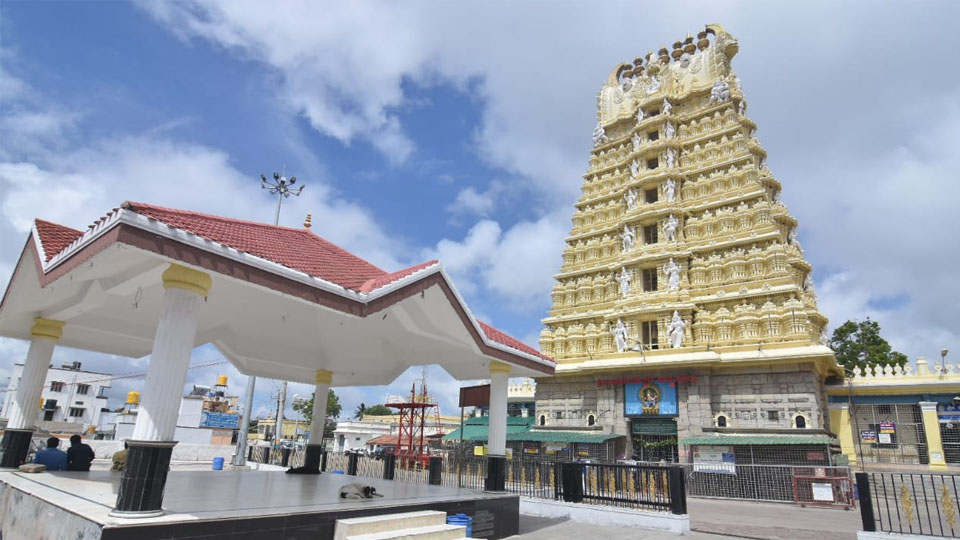
The temple is quadrangular in its form and its main feature includes an idol of Mahishasura holding a cobra in its left hand and a sword in the right. There is also a sculpture of Goddess Chamundeshwari sitting in a yogic posture. There is an age-old practice since the times of Mysore’s Maharajahs where the Goddess Chamundi is carried on an attractively decked up elephant during the Dassera celebratory processions. The edge of the temple provides a panoramic view of the city from where the Karanji Lake, the Main Palace of Mysore and many other temples constructed by Shirdi Sai Baba followers are clearly visible.
6. Mysore Zoo
Formally known as “Sri Chamarajendra Zoological Gardens” the zoo is spread across an area of 64 hectares located near the Mysore Palace. One of India’s most famous and oldest zoos, it serves as a habitat for over 168 species of animals. This zoo has been maintained and funded by the donations made by institutions, animal admirers, and famous personalities.
Originally identified as the Palace Zoo was developed in the year 1892 by a German horticulturist and landscaper – G.H. Krumbeigal. This zoo was opened in 1902 to the public and boasts of a man-made lake, the Karanji Lake. The water body is over 77 acres and is currently a nesting and breeding ground for many birds. The zoo is home to many giraffes, tigers, lions, elephants and even anacondas.
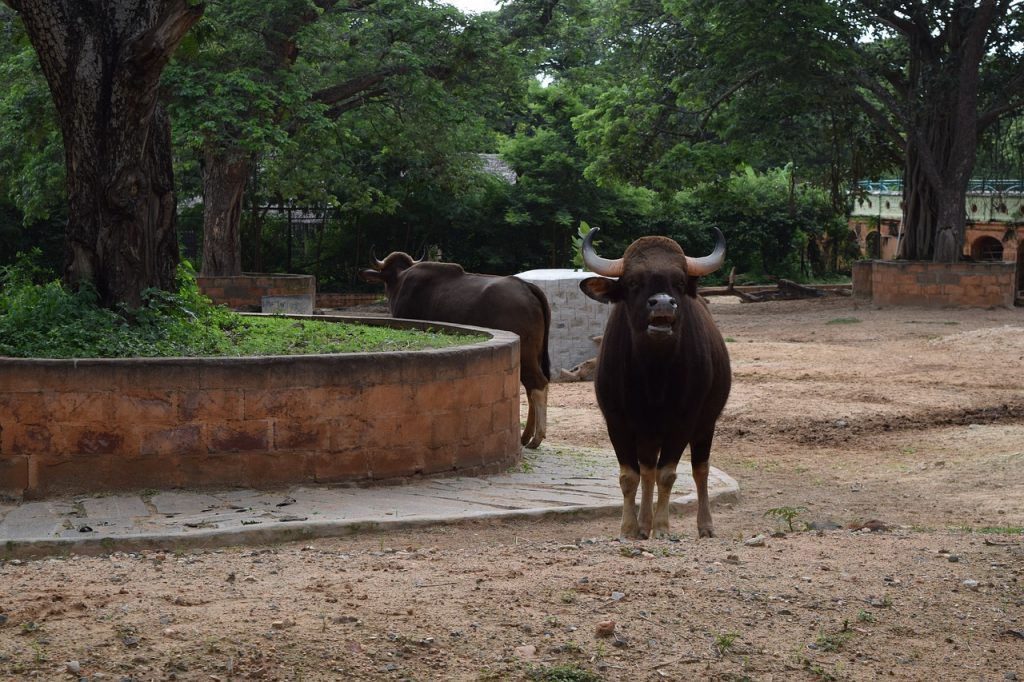
The zoo is home to many giraffes, tigers, lions, elephants and even anacondas. It is currently maintained by Karnataka’s Zoo Authority and completed a century in 1992 where various initiatives were made such as refurbishment and renovation of the hospital, entrance gates, etc. Other highlights included introducing the zoo’s souvenir, leaflets and books publications, zoo’s logo, competitions, documentary film, etc.
7. Philomena Church
This Catholic Church was constructed in the year 1936 as a tribute to St. Philomena in Mysore. The church highlights a Neo-Gothic architectural style which draws its inspiration from Germany’s Cologne Cathedral.
St. Philomena, a saint of Latin Catholic origin was a Greek princess martyred at the age of 14 in the 4th century. The remains were found in Saint Priscilla’s Catacombs in Rome along with an inscription meaning “Peace with you, Filumena.” Other symbols such as her dried blood in a vessel were also found.
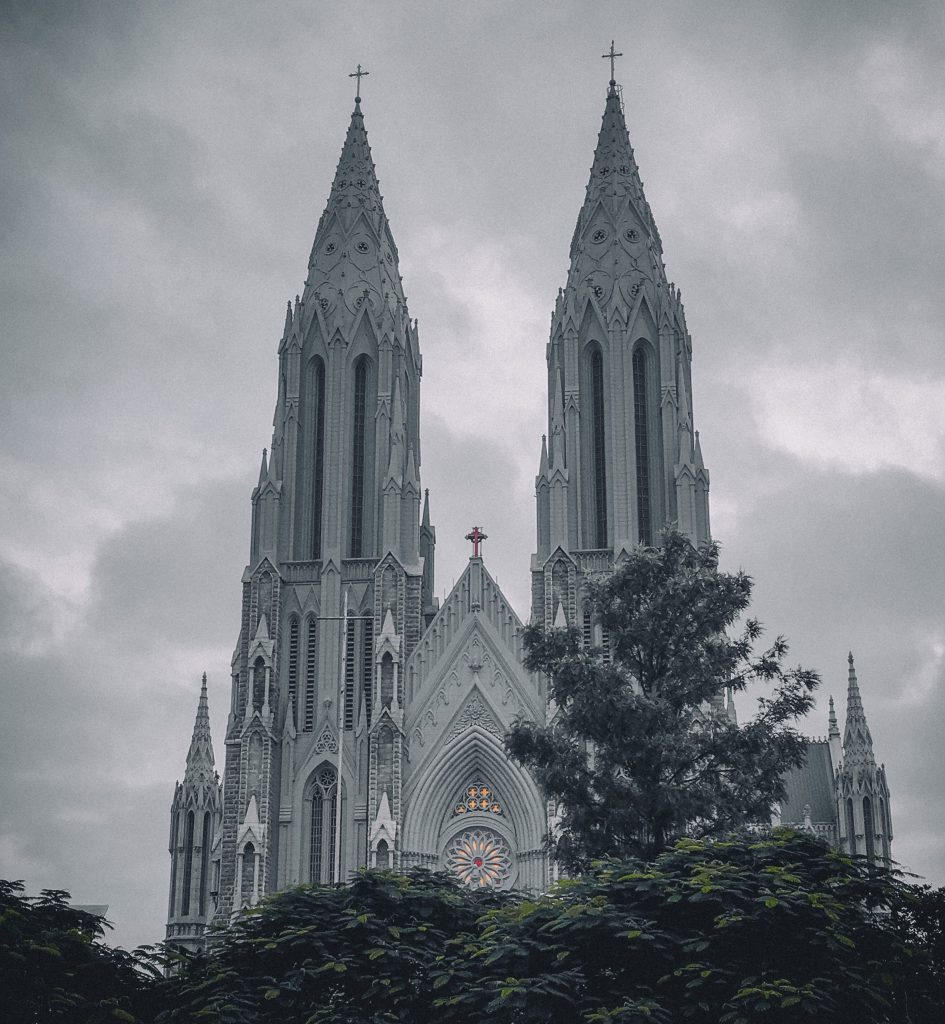
The church, being one of the tallest in Asia was designed by Daly, a French architect. The ground floor of the Church signifies the symbol of a cross with the cross’s long area being the nave or the congregation hall which can accommodate 800 people.
The crossing of the symbol is the choir and the altar. The halls also adorn glass windows stained with images reflecting the Last Supper, the birth of the Christ, the Crucifixion, Resurrection and other events of religious significance.
8. Brindavan Gardens
Though not located within the city limits, the Brindavan gardens very form an integral part of what makes Mysuru the culture capital. Situated at a distance of about 22, in Mandya, the gardens lie on the banks of the Krishnarajasagara dam built across the Kaveri River. Beautiful landscaping, a variety of flora and vast open green lawns of the gardens make it a popular attraction in the region.
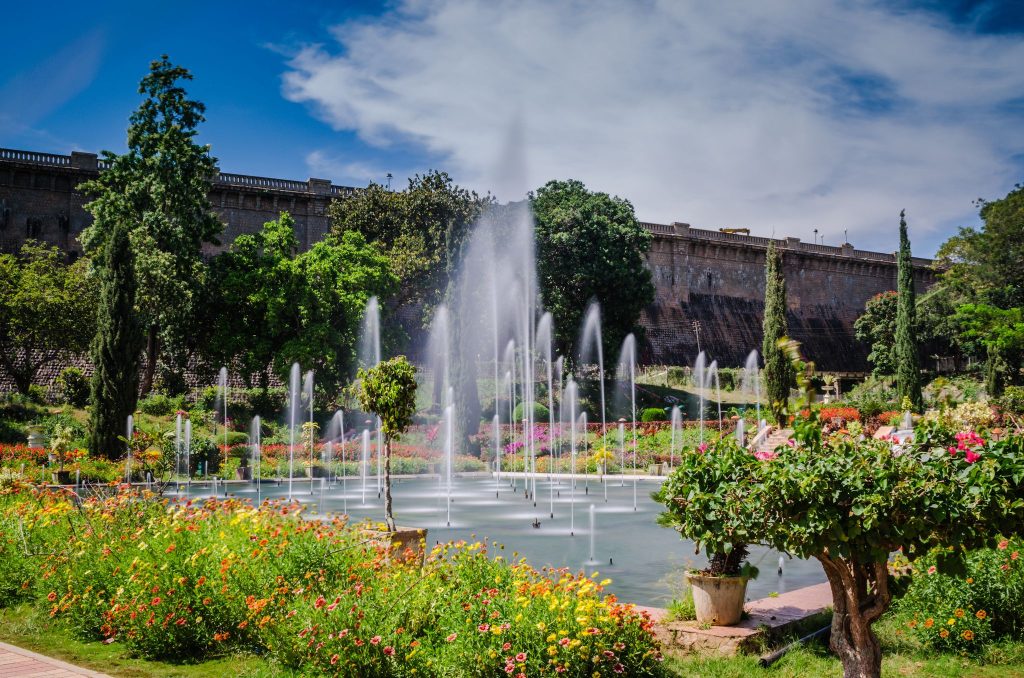
The Brindavan is spread over 60 acres of land area and adjoins horticultural and orchid farms. It has 3 sub-divisions which comprise of ficus trees, water fountains, flowers like Marigold and Celosia and foliage plants. Shrubs in the shape of animals, passageways created by creepers, gazebos and other adornments including a lake with facilities for boating are also found in the garden which is publicly accessible on an entry-free charge.
Maintained by the Irrigation Department of Cauvery is one of the popular tourist destinations and is visited by tourists all year long. The park’s main highlight is a musical fountain where water bursts synchronize with music. In 2005, the garden underwent a makeover which involved digitalizing the musical fountain and undertaking maintenance and repairs.
9. Rail Museum
This museum, set up in 1979 in the city by the Indian Railways, exhibits locomotives of vintage nature. The Railway Museum is located on Krishnaraja Sagar Road, displays various paintings and photographs in a gallery which illustrates the growth and development of the Indian Railways over the years. A mini toy train is also set up on the grounds for children to ride on it. Railways lights and signals are displayed for the public too.
10. Oriental Research Institute
The institute, often referred to as the Oriental Library was incorporated in the year 1887 during the reign of King Chamarajendra Wodeyar X. It undertakes research for various antique publications and manuscripts such as Brahmic, Nandinagiri, Malayalam, Devanagiri, etc.
The library is situated opposite to the Main University’s Crawford Hall and adorns beautiful architecture that was made to celebrate Queen Victoria’s 50-year succession to the throne during the British era. The library here was initially a part of the Education Department until 1916 and thereafter, it became a part of the University of Mysore. It was renamed in 1943 as the Oriental Research Institute.
From the comprehensive list above, you can gather just how rich and vibrant the history and culture of the city of Mysore is! It is no surprise that it has been touted as one of the must-see destinations in the world, by the New York Times.

